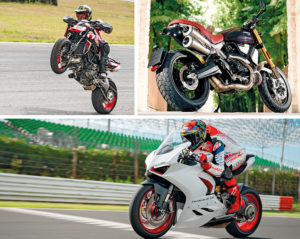You know how things are going in these cases: you buy an old bike, just that model that you like so much, then you start to put it back in place, then to make some changes here is there and finally you get your hand a little bit!
That’s exactly what happened to our British friends Linda and Paul from November Customs with their 1974 Scrambler 350, bought just imported from Spain in 2016.
This was the case, with a first modification to the end of theframe, just for the same to follow a continuous straight line, instead of raised precisely in the final area, that of the saddle.
Then it spontaneously came to put your hand to the rear fender,to make it position lower, more enveloping to the tire. Unfortunately, then, the base of the saddle was completely rusty:what better opportunity to review its shapes and provide a new padding covered with black leather?
At this point it was decidedly difficult to stop, as ideas were now clear on how to transform the old Scrambler; thus came the next step, which saw the elimination of the air filter, replaced with a simple aluminum suction croissant,but equipped with a special mesh to prevent debris and other debris from entering the carburetor.
The carterin on the head, with the referral of the t-infection, has been eliminated and replaced by an aluminum frame with transparent perspex lid, so that the conical pair can always be in sight: certainly a perfect show!
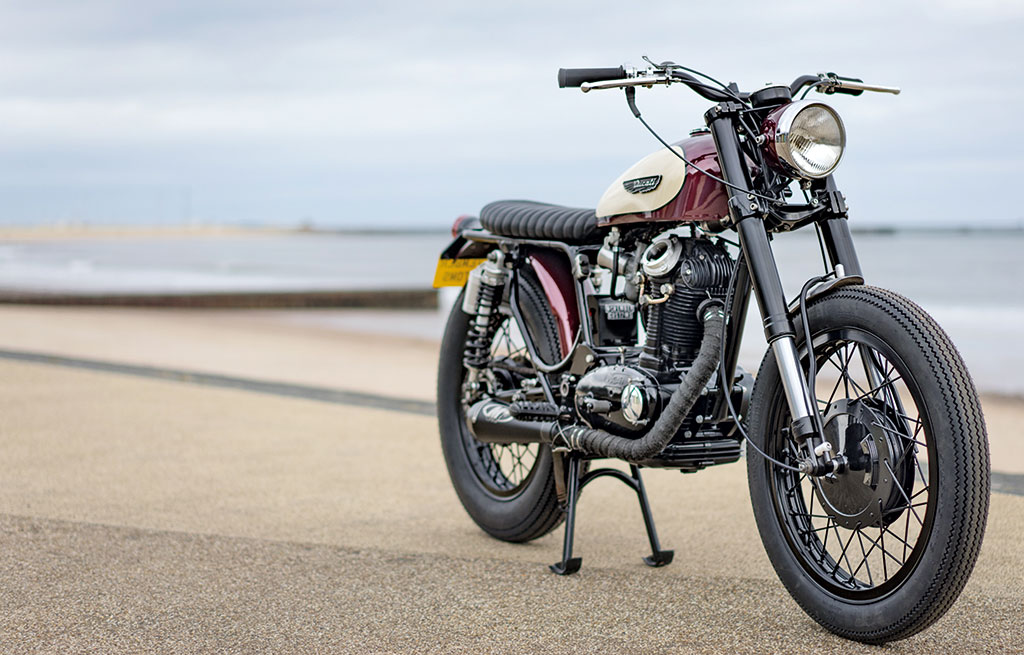
chrome, like the window on the head that gives a glimpse of the conical pair.
Still on the subject of engine, this has been completely disassembled and put back in place. The carters were sandblasted, then finished with a coat of satin black paint: same treatment for cylinder and head.
In fact, at first the intention was to chrome the engine cranks, but unfortunately the result did not live up to expectations, so we definitely focused on glossy black. Same color also for frame, swingarm and wheels.
I collettori di scarico sono rimasti quelli originali, mentre il terminale prescelto rappresenta certamente una
In sincerity, we also do not mind the terminal, as it is not bulky and in any case of classic shape, but of course everyone has their own tastes!
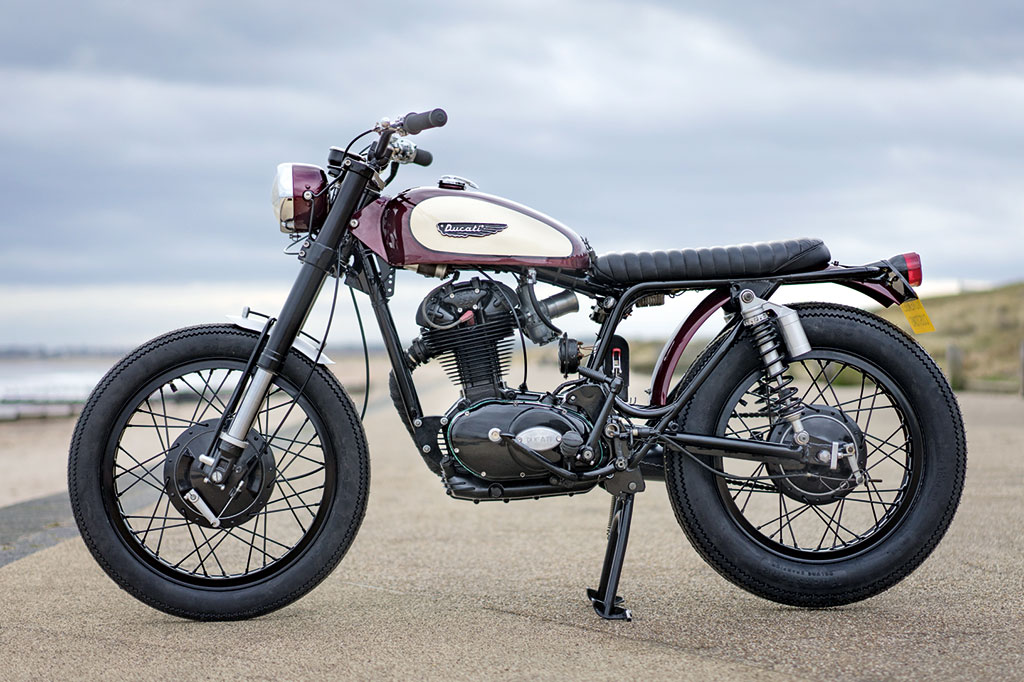
Another theme of discord was that related to the choice of
The fact remains, then, that a couple of more traditional tires are always available to modify the bike if they feel like it and feel the need!
The tank remained the original one, although it was slightly raised with supports in the back so that it was parallel to the ground. Then, along with other parts of the bodywork, it was painted in a beautiful and warm burgundy shade, with the central part of the same in white and original Ducati stickers.
Also in the period theme, the platforms have earned two rubber footrests with the inscription Ducati.
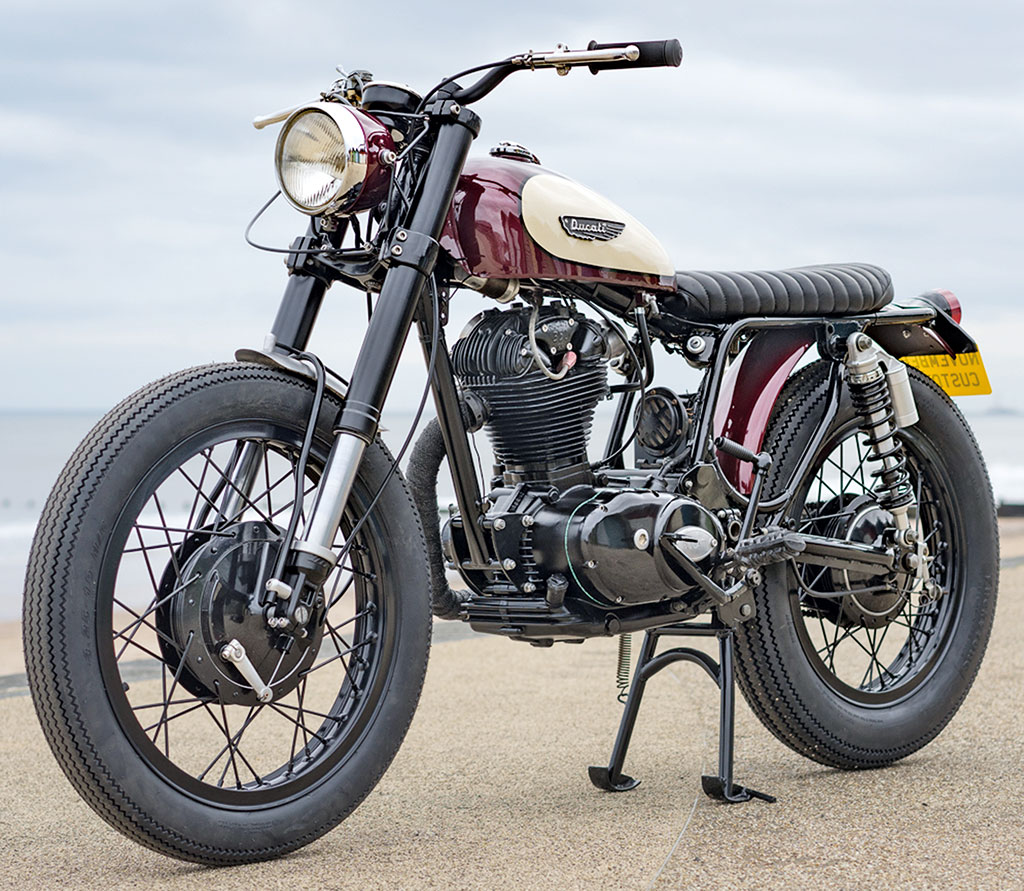
Turning to cycling, it should be noted that the most significant changes have been made here, so much so that now the fork is a WP from a KTM of current production.
The original steering wheel, with few modifications, was easily adapted to the new steering plates, with the pleasant subsequent discovery that, wanting to keep the Wheels of the Scrambler, their wheel rod perfectly adapted to the new fork: the same diameter! Apparently everything had to be accommodated in such a simple way!
The fact of not using the KTM braking system has meant the elimination of radial clamp feet from the fork, as well as other supports, so as to have to renew it aesthetically, but also internally with new liquids and gaskets.
A support was then made that attaches to the fork and locks the drum brake in place.
At first there was no intention to equip the bike with a front fender, but, in hindsight, it was decided that one was needed, even if very small!
For the rest of the project, Paul and Linda mixed original parts with restored ones,such as the front and rear headlight, which are original, but have been updated with new lights and parables.
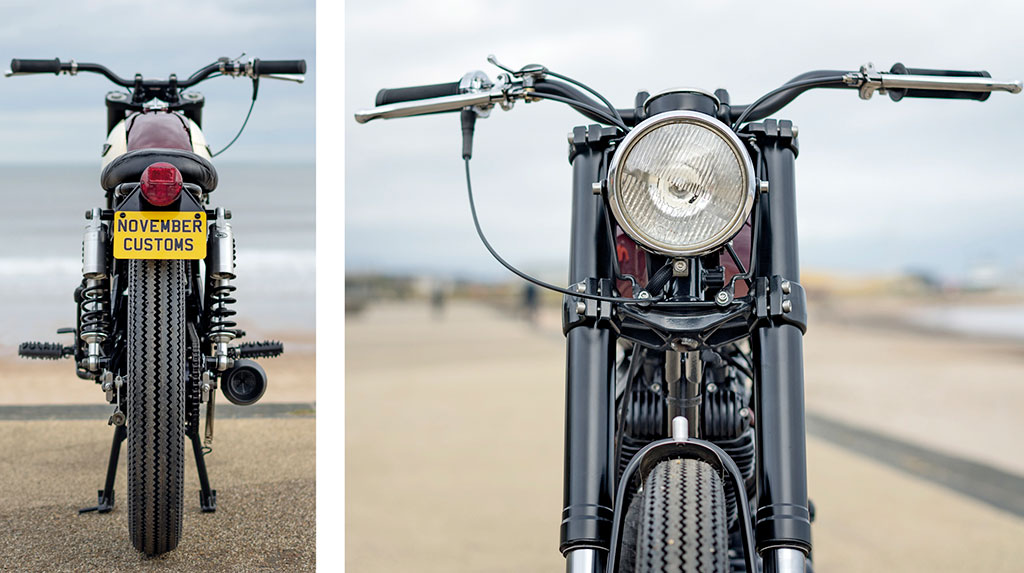
The rear headlight saw its powder-coated support, while the front headlight was repainted and mounted on new brackets.
The control deck features a Renthal handlebar, aftermarket levers and new cables. In addition, wanting to keep the handlebars as clean as possible, the switches were moved to the frame, under the saddle. The speedometer is also new, by Smiths, but it’s vintage style.
It should be emphasized that all the work, assembly and tussing were carried out within November Customs, as per tradition.
Linda and Paul have defined their work as Restomod,an Anglo-Saxon term for a restoration carried out using modern components on a period basis.
At the base of this practice, there is the idea of combining vintage performance and driving performance similar to those of modern motorcycles, modifying suspension, braking system and so on.
In fact, our friends are not so convinced that their Scrambler falls fully into this category: ” We are not sure that we should have defined this work as a Restomod, as the end result is certainly not close to that of an original and placed next to a vintage model the differences are noticeable, although for us it is immediately recognizable as
The fact remains that we are faced with an interpretation rich in personality and character, perhaps for this reason difficult to frame in a specific category.
However, it remains evident the search, in our opinion successful, for a balance between the customization of the bike and the remaining in contact with its world, its history and its origins.

